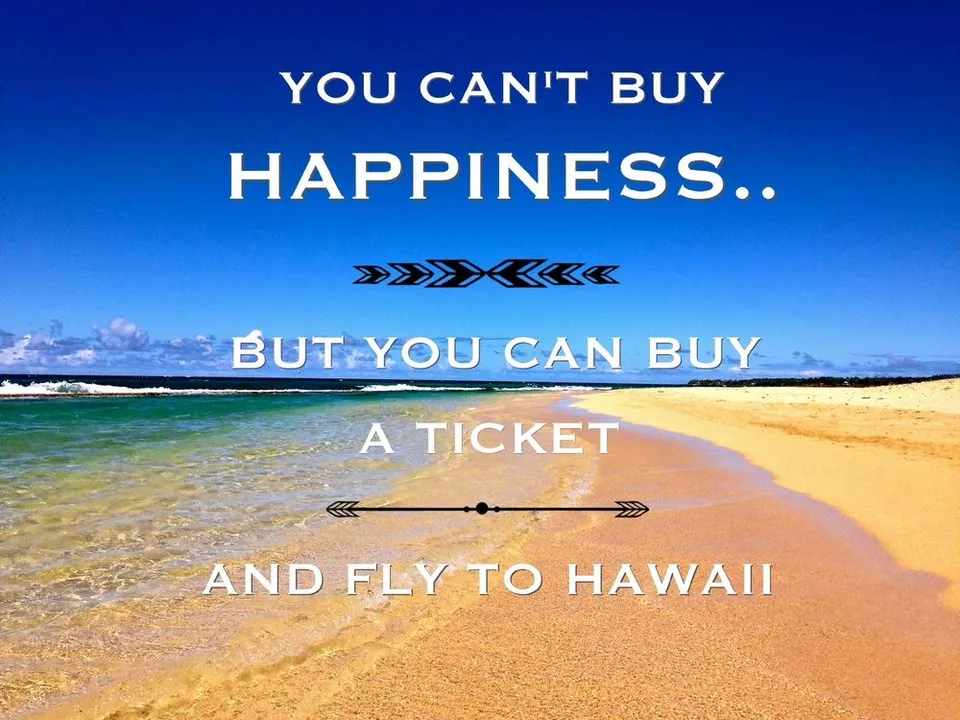The High Cost of a Hawaiian Getaway
While it's no secret that Hawaii is a beautiful and popular travel destination, it's also widely known for its expensive price tag. From the initial cost of flights to accommodations, dining, and entertainment, the expenses can quickly add up. In fact, many travelers may find themselves spending more money on a trip to Hawaii than they would on an international vacation! Additionally, the overall cost of living in Hawaii is significantly higher than the mainland United States, which means that even everyday items like groceries and gas can be much more expensive than you're used to.
This might not be an issue if you're planning a once-in-a-lifetime luxury vacation, but for many people, the high cost of a trip to Hawaii is simply not feasible. Instead, consider exploring more budget-friendly destinations that offer a similar tropical experience, such as the Caribbean or Mexico, where your dollar will go much further.
Overcrowding and Overtourism
With its stunning natural beauty, it's no surprise that Hawaii is a popular destination for tourists. However, this popularity has led to issues with overcrowding and overtourism, particularly on the island of Oahu. In recent years, the number of visitors to Hawaii has skyrocketed, leading to crowded beaches, trails, and attractions. This can make it difficult to truly relax and enjoy the natural beauty of the islands.
Furthermore, the influx of tourists has put a strain on local resources and infrastructure, leading to problems with traffic congestion, water usage, and waste management. As a result, some areas of the island have started to feel the negative impacts of overtourism, which can detract from the overall experience. If you're looking for a more secluded and peaceful vacation, you may want to consider alternative destinations that aren't as heavily impacted by tourism.
Environmental Impact
As a responsible traveler, it's important to consider the environmental impact of your vacation choices. The Hawaiian Islands are home to a delicate ecosystem that has been significantly impacted by the millions of tourists who visit each year. From trampling on sensitive vegetation to causing erosion on hiking trails, the sheer volume of visitors can take a toll on Hawaii's fragile environment.
Additionally, the high demand for resources like water and energy on the islands can contribute to environmental degradation. By choosing to travel to a destination with a lower ecological footprint, you can help to reduce your impact on our planet and preserve these beautiful destinations for future generations.
Potential Natural Disasters
While Hawaii is undoubtedly a stunning destination, it's also a region that is prone to natural disasters. From volcanic eruptions and earthquakes to hurricanes and tsunamis, these events can pose a risk to your safety and disrupt your vacation plans. In recent years, we've seen the devastating effects of natural disasters on the islands, such as the eruption of Kilauea Volcano in 2018 and the destruction caused by Hurricane Lane.
While the risk of a natural disaster occurring during your trip is relatively low, it's still something to consider when planning your vacation. If you're concerned about the potential for natural disasters, you may want to choose a destination with a lower risk profile.
Long Travel Times and Jet Lag
One often overlooked downside to visiting Hawaii is the long travel time and potential for jet lag. Depending on where you're traveling from, you could be facing a flight of 10 hours or more, which can be exhausting and uncomfortable. Moreover, once you arrive in Hawaii, you may find yourself dealing with jet lag due to the significant time difference from your home.
This can lead to a slow start to your vacation as you struggle to adjust to the new time zone, cutting into your precious relaxation time. If you have a limited amount of vacation time or simply don't want to deal with the challenges of long-haul travel, you may want to consider a destination that is closer to home and easier to reach.
